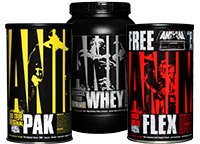
4 Must-Try Training Tactics Of Pro Bodybuilders
Experienced bodybuilders can walk into any gym and get a great workout. Here's how Antoine Vaillant and Chris Tuttle craft pro-level workouts wherever they may lift.
Look around online, and you'll find thousands of articles laying out the details of Joe Pro's "pick your body part" routine. The workouts typically look more or less the same, because they are—on paper, at least. But in action, every pro's routine is highly personalized and reflects years, if not decades, of relentless experimentation.
Amateur bodybuilding fans love to obsess over the numbers—How much ya bench? What are your macros? Are you doing 5x5 or 3x10?—but pro bodybuilders like Universal athletes Antoine "Captain Torrent" Vaillant and Chris Tuttle let time-tested principles, instinct, and their accumulated wisdom guide them to unimaginable results.
Texas Universal Road Trip Episode 1
Watch the video - 19:42
These two could walk into any gym in the country, with pretty much any equipment, and train at a world-class level fearlessly and confidently. Then, as you'll see in the first installment of their Universal Road Trip video, they'll play just as fearlessly. Here's how to apply their supersize tactics to your own training.
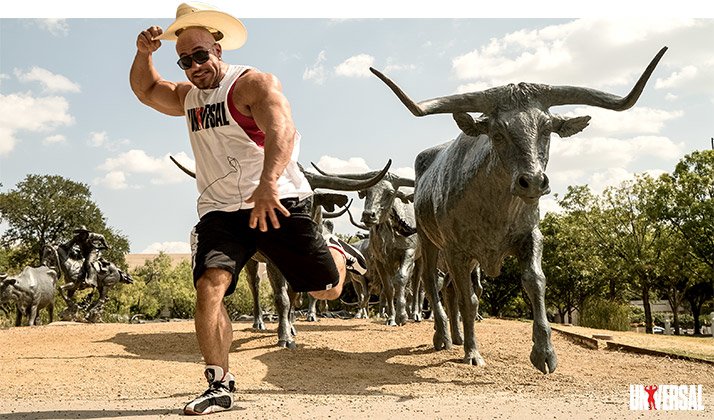
Start With a Pump
If you're like most people, your warm-up consists of a few minutes of pointless treadmill strolling and some sets so light they're in danger of floating away. Vaillant and Tuttle value their time in the gym too much to waste those early minutes. They start with some dedicated work to push blood—and plenty of it—into the muscle groups they're targeting for the day.
For Vaillant, a few supersets of rope push-downs and cable curls are sufficient. "Don't count the reps," he commands. "I do it until I get a good pump."
Tuttle's first working sets are lat pull-downs, but his warm-up takes place on the pull-over machine, which provides all of the back work and none of the arms. "I love pull-overs. They're a good way to isolate the lats and fill them with blood, and I'll always do them first before I hit the lat pull-down," he explains. "That way, my lats are really fatigued before I have to pull more with my arms. It just pumps a whole lot of blood in there and gives a good feel. Gets everything ready and primed."
That idea of pre-fatiguing is one that many elite bodybuilders swear by. Having a hefty pump from the get-go allows them to maintain a stronger mind-muscle connection for all subsequent movements. This is what allows them to use feel, rather than just numbers, as their guide. Their lifts might not be as heavy after a little pre-exhaust, but they're certainly effective.
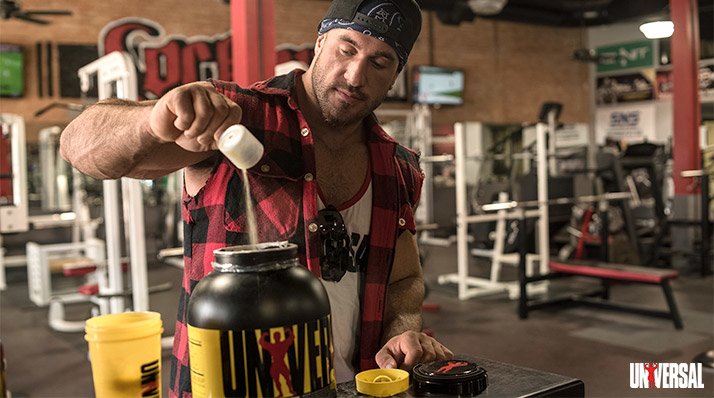
Use Supersets to Your Full Advantage
Supersets can be overdone and misused, like anything else. But when you're training arms, there's almost nothing better. "I always do arms in supersets," Vaillant says. "Lots of back-and-forth. When you don't rest a lot, the pump gets better. You keep punching the muscle with the exercises."
Plenty of lifters utilize the sort of rapid-fire cable supersets from Vaillant's warm-up, but those from later in his routine are the real game-changers. His first pairing, for instance, consists of close-grip bench presses with chains alternated with dumbbell hammer curls.
Why chains? Powerlifters have long used chains and other forms of so-called accommodating resistance to improve their "lockout strength." Translated into bodybuilding, that means unparalleled triceps activation. Experienced lifters know that engaging all three heads of the triceps requires serious intensity, and a few chains can help provide it—if you apply them right. If not, you might as well just add another plate.
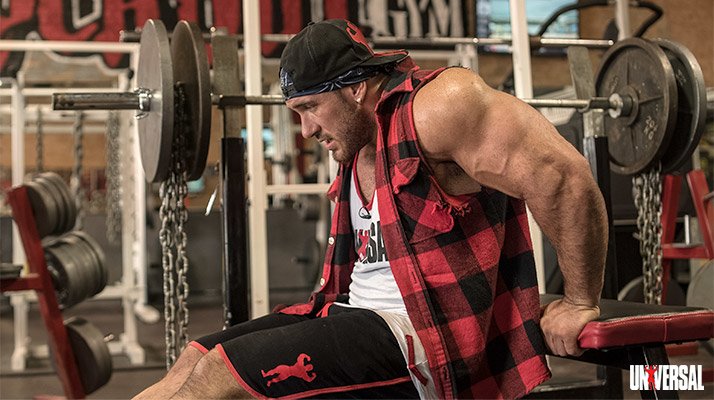
And of course, don't rest like a powerlifter after these sets, even though they're brutal. "Rest 30-60 seconds maximum between your sets and just keep pumping them back to back," Vaillant advises.
Go Beyond the Rep Range
Here's the real difference between pros and amateurs: Pros don't stop at a predetermined number of reps. Both Tuttle and Vaillant aim for an approximate rep range with full-ROM movements, then continue with partials on muscle-isolating movements like preacher curls and pull-downs. "When I reach failure, I just start doing half-reps at the bottom to stretch out and put more blood in there," Vaillant says.
Difficulty for pros is an overarching commitment. They never look for an easy way through a set, but rather for anything that will make each set maximally intense. This mindset allows Vaillant to take a movement that's considered easy, such as bench dips, and make it as difficult as he needs. "You could do 50 reps of these," Vaillant says. "So make your reps harder. Slower. Squeeze and hold, especially on an exercise that's easy like this. Don't just do reps to finish the 15 you're supposed to. If you can find a way to achieve failure before then, reach it."
Each set is a challenge to see how much more they can do, and how long they can delay failure. Tuttle says, "Towards the end when I finally fail, even though it's not a complete repetition, I'll continue to keep doing it and doing it even though it's a quarter, half, even an eighth rep—until the back fails completely."
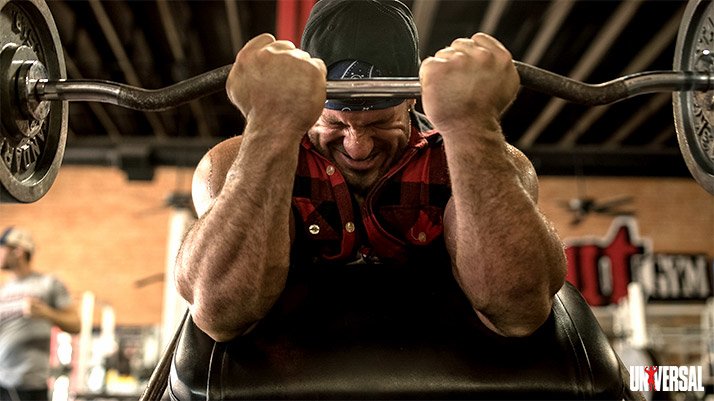
Let Your Technique Grow With You
For years, Tuttle says, his back was his weak point, and the reason why eluded him. Then he took a hard look at the way he was performing pull-downs and realized that his brachialis and biceps were getting as much of a beating as his lats. The answer, he realized, was to change the way he performed the movement and limit the range of motion, the form police be damned.
"A lot of times people are like, 'Oh, he's not touching his chest.' But when I come all the way down, I feel it nowhere except in my arms," he says. "But this way, my arms never get pumped during this part of my back workout. In the year that I've been doing this, the ground I've made up has been astounding. There's way more difference, show date to show date, than there was in the previous four years. I finally found something that really works for me."
Pros know that pulls in particular can be tricky. Everyone wants to focus on how much they're pulling, when the real answer is how they are pulling. Variables like hand position, angles, and range of motion matter here more than almost anywhere else.
Sure, bodybuilding is about consistency, but it's not—and has never been—about going through the motions. The textbook, one-size-fits-all approach is a great way to find your footing, but once you've nailed it, find what works for you specifically and stay open to change. This is how the pros keep growing.



